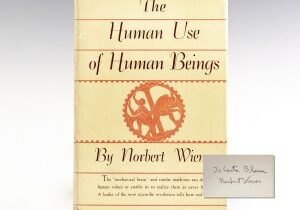
First Editions of the First and Second Jungle Book each year we celebrate International Children’s Book Day.
April 2nd is the birthday of author Hans Christian Anderson and each year, people around the world celebrate International Children’s Book Day in his honor. We would like to take a moment to talk about collecting children’s books in light of this special day.
Children’s books are highly collectible. They’re immensely nostalgic for collectors, pleasantly reminding us of the magic simplicity of childhood. But they’re also difficult to find in good condition. By nature of being handled and appreciated by children, their pages are torn and marred. Condition is therefore the chief determinant of value, and dust covers are perhaps the scarcest aspect of children’s book to be found in good condition. Parents often discard them immediately to fulfill their inevitable destruction on the child’s behalf.
The earliest children’s books date back to the 17th century, but they were neither well-written nor illustrated until the 1920s when literacy was near universal and color printing available. Millions of Cats is perhaps the first modern children’s book. It was published in 1928 and it the oldest children’s book still in print. Its author, Wanda Gag, was the first to pioneer to book’s unique double-page spread.
Ten years later the illustrator Georges Duplaix created the novel idea of a series of books written and illustrated for very young readers. The books would be bound in pictorial boards (hardcovers with color pictures on the front and back) and sold for cheap. Duplaix’s series, Little Golden Books, became a trend amongst publishers that is responsible for the concept of children’s series. Virginia Lee Burton’s The Little House contributed further to the presentation and format of children’s books. She meticulously adjusted each page of The Little House to achieve a balance between text and image that would maximize the child-reader’s interest and education (Burton, 1943).
Some children’s books focus less on format and more on content. The Story of Ferdinand (1936) abandoned factual accuracy to facilitate children’s understanding. Author Robert Lawson depicted Spain’s geography loosely, focusing more on the sense of fun the landscape provided. In similar fashion, Dr. Seuss’ The Cat in the Hat advanced the efforts made by the genre to educate children. Its publisher, Random House, created for it upon its immense success its own publication house: Beginner Books, for which Dr. Seuss (Theodor Geisel) was made president. Beginner Books dominated the children’s books market of the 1960’s, and it contributed to the blurring of the distinction between education and entertainment books (Zielinksi, 2006).
Other children’s books derive their novelty from their source of inspiration. For Mike Mulligan and His Steam Shovel (1969), Virginia Le Burton ingeniously spoke to children for inspiration for the plot. The idea for the steam shovel becoming a source of heat for the house came directly from a friend’s twelve-year-old son (Sullivan, 2006). The modern series Olivia is similar. The author, Ian Falconer, began the series as a present for his amusing niece, but the specific personality of the character was inspired by an accidental encounter Falconer had with another Olivia of about the same age.

















